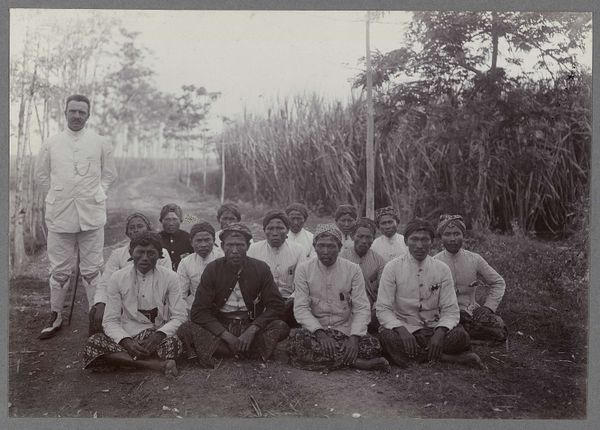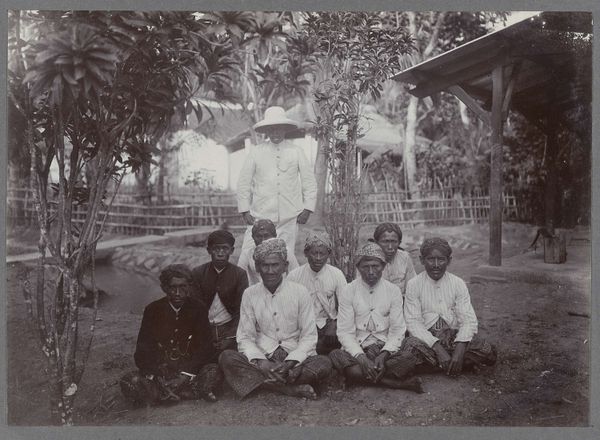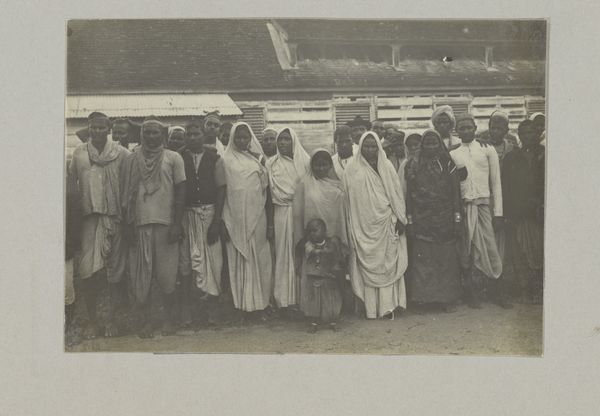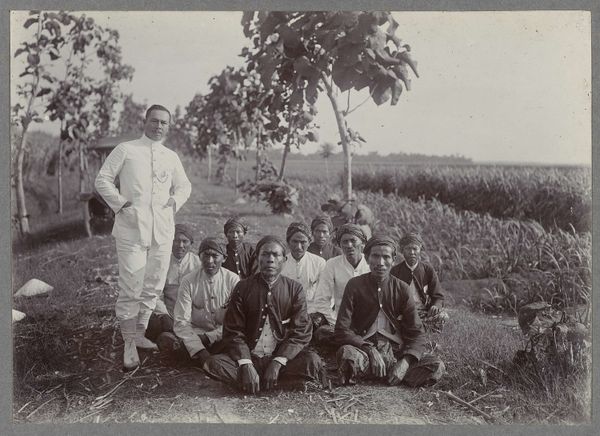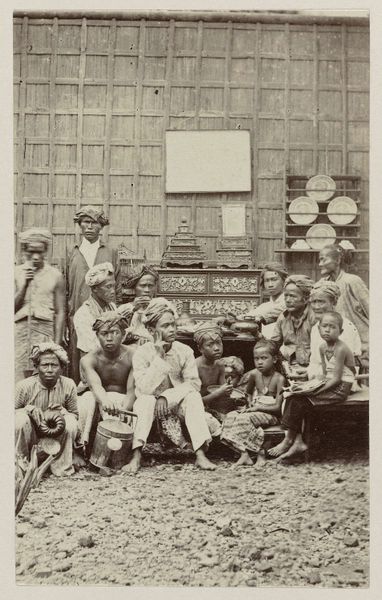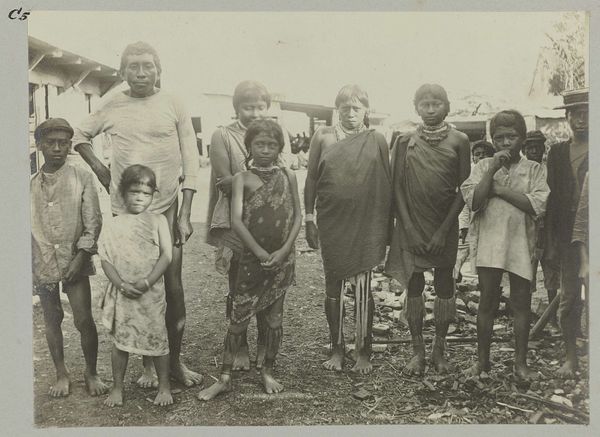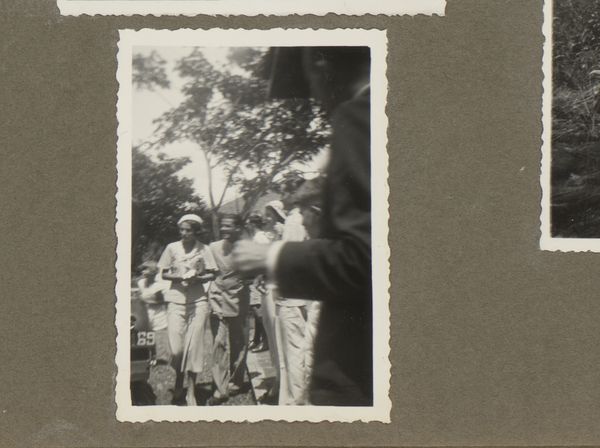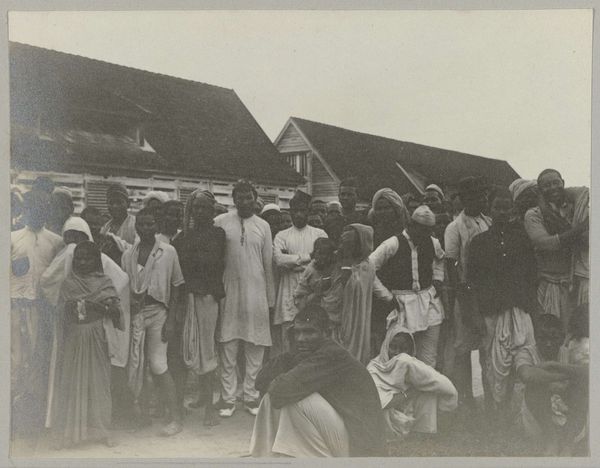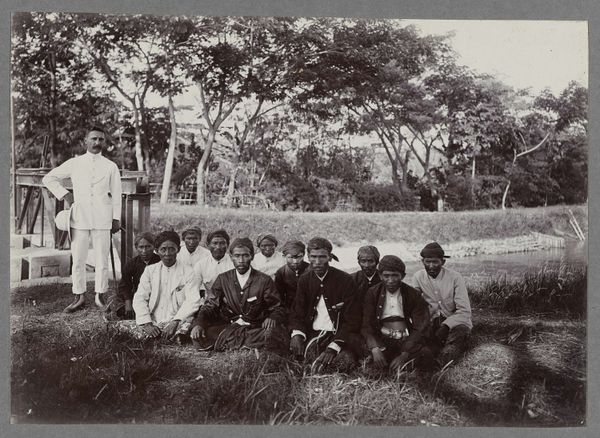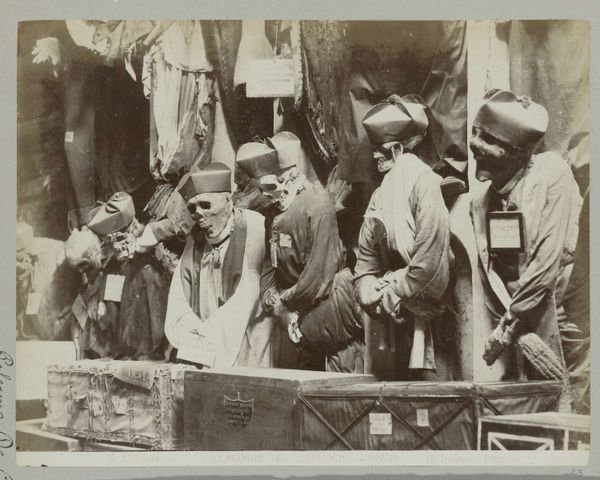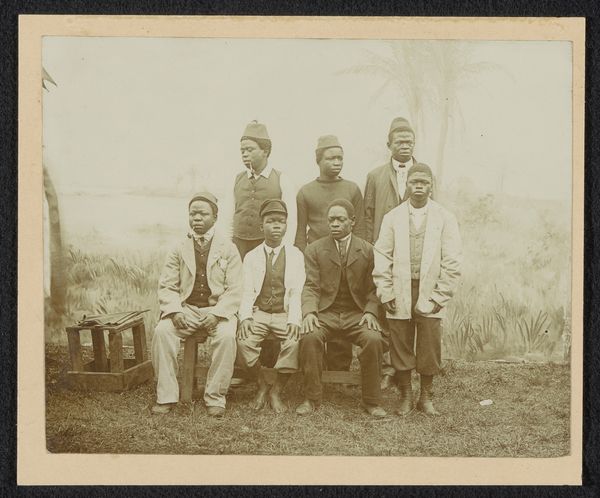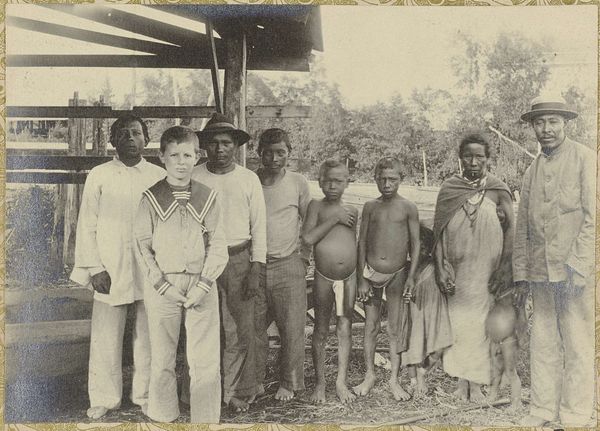
photography, gelatin-silver-print
#
portrait
#
print photography
#
photography
#
orientalism
#
gelatin-silver-print
#
realism
Dimensions: height 82 mm, width 112 mm
Copyright: Rijks Museum: Open Domain
Curator: The image before us, captured in a gelatin-silver print between 1903 and 1910 by Hendrik Doijer, is titled "Hindostaanse contractarbeiders in het immigrantendepot," depicting indentured laborers in what appears to be a holding area. Editor: The overall tonality lends a rather melancholic aura, wouldn’t you say? Despite the close gathering of individuals, a palpable sense of uncertainty or perhaps weariness hangs in the air. Curator: Absolutely. We need to recognize the historical context. This image captures individuals at a specific point in their journey—displaced, processed, and about to enter into a system of indentured servitude that often replicated, in many insidious ways, the exploitations of slavery. Editor: You can read the visual cues as evidence. Consider the head coverings – the turbans and caps. These objects denote specific cultural and possibly religious affiliations brought from the Indian subcontinent, emblems of identity transported and, invariably, transformed in new environments. Curator: Precisely. These are not merely aesthetic details; they are loaded with significance. The photograph raises crucial questions about identity, diaspora, and the power dynamics inherent in colonial enterprises. Whose gaze does this photograph serve, and what narrative does it construct? Editor: Also note the array of poses and expressions—some are attempting stoicism; others appear vulnerable or even ashamed. One individual covers his face completely, hinting at profound inner turmoil or reluctance toward the photographer’s presence. This speaks volumes about the subjects’ agency, or lack thereof. Curator: A potent reminder that these were not passive participants but complex individuals forced into unimaginable circumstances. It's vital to unpack the Orientalist lens through which such images were often created and circulated and to examine the power imbalances it perpetuates. This photographic style reduces individuals into subjects of a controlling worldview that reinforces power structures. Editor: The act of documentation, too, carries layers of intent. What symbols and iconographies are implicitly being used to influence ideas about the East, migration, race, and labor at this moment in the colonial project? Curator: Understanding this piece within such narratives opens a door for us to recognize how such visual records perpetuate damaging colonial tropes. This challenges viewers to acknowledge their responsibility as witnesses of difficult history. Editor: Indeed, recognizing the intricate tapestry of cultures, religions, and experiences embedded in a single artifact prompts reflection on the very nature of cultural identity. Curator: A sobering exploration of humanity under duress.
Comments
No comments
Be the first to comment and join the conversation on the ultimate creative platform.
